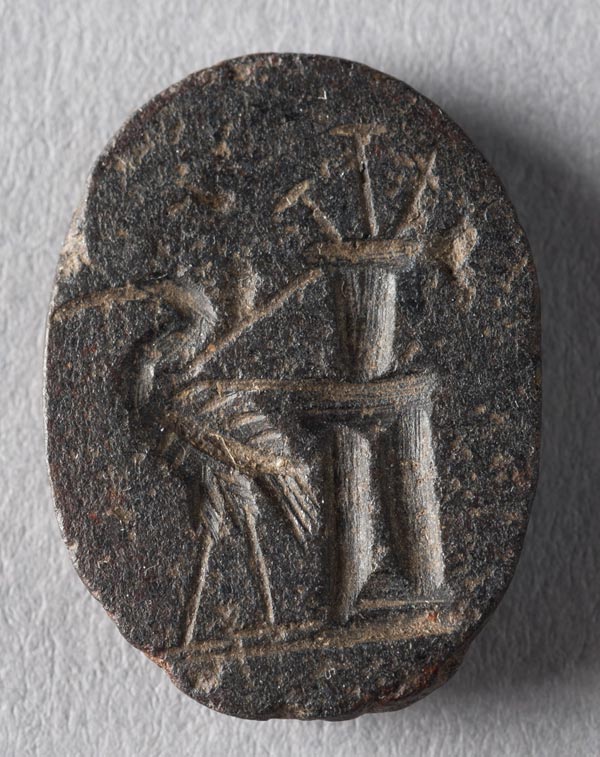The obverse side of this amulet contains iconographical elements that are fairly common in this type of amulet. On the left is a long-billed bird, easily identified as an ibis, tied by the neck to a pot holding three flowers, which in turn is placed on top of an altar. Since the ibis is widely recognized as a devourer of snakes and other pernicious reptiles, we must conclude that, in this context, the ibis is conceived as a means to eliminate the ailments of the stomach, and that the offering on the altar confirms the status of the ibis as an animal sacred to the Egyptian god Thoth. Moreover, on the reverse of the amulet we read the formula-like repetition, πέπτε, πέπτε, πέπτε, which, addressed to the stomach itself as an autonomous organ, aptly means “digest, digest, digest!”
Stomach Amulet


Stomach amulet: ibis tied to a flower pot In Greek Limonite, brown 22 x 16 x 4 mm 1st–5th c. AD Egypt SCL-Bonner 28

